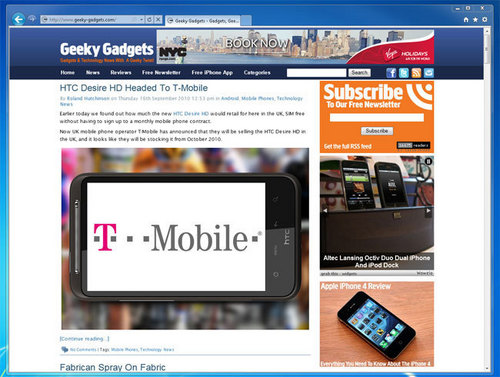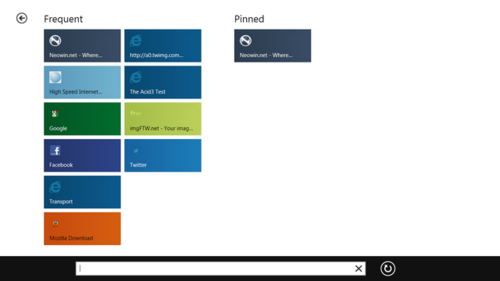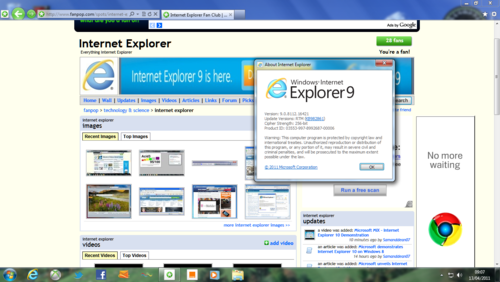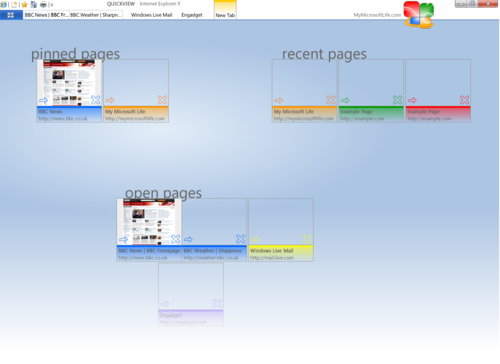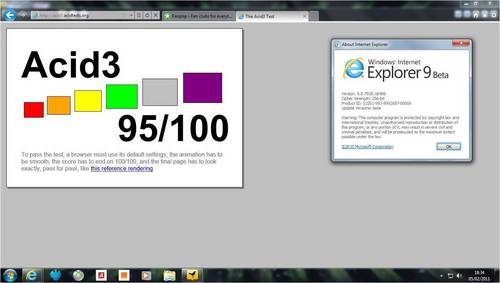Something extraordinary happened this month. Google released version 10 of its Chrome browser. Microsoft released Internet Explorer 9. And now, after an epic development cycle that included 12 betas, Mozilla has finally said “Ship it” for Firefox 4.
Three major releases from the three leading browser developers in the same month? That’s unheard of. It took more than 15 years for Internet Explorer to work its way through nine versions. Firefox, which used to be the agile upstart, has taken nearly two years to progress from version 3.5 and nearly three years from version 3.0. It took Google only a bit more than two years to ship Chrome 9 last month, and it was replaced by version 10 just a little over four weeks later.
That difference in tempo is fundamental to understanding how the computing world has changed. The idea of branded browsers as standalone pieces of software seems increasingly quaint. Google is setting a blistering pace and defining a world where a browser is simply a piece of plumbing that you refresh every few weeks (unless you think that’s just too slow and you want to download a new build every night).
It’s tempting to look at Microsoft’s history with Internet Explorer and assume that they are just incapable of working at the speed of the Internet. It’s also easy to be skeptical about Mozilla’s ambitious roadmap that has them shipping versions 5, 6, and 7 before the end of this year. But take a closer look at the development process for IE 9 and there’s a different story to tell. Microsoft is playing the same game as Google. Mozilla is stuck in 2005. And that’s why the core of Internet Explorer will still be around in five years when Firefox will have, at best, a loyal cult following.
The first platform preview of Internet Explorer 9 was released on March 16, 2010. The final release arrives just two days shy of the one-year anniversary of IE9’s public debut. I don’t think that’s a coincidence. IE9 is part of Windows, and its development reflects the same engineering discipline that we saw in Windows 7: Plan, develop, stabilize, ship. Repeat.
During that year-long cycle, Microsoft cranked out one beta and a release candidate. More importantly, they released seven updates to the platform preview—at a pace of one every 6-8 weeks or so. It’s worth noting that Microsoft could have slapped a user interface and a version number on each of those releases. If they had, the cadence would have matched up neatly with that breakneck pace set by Google. But they chose to leave those distractions off and focus on the rendering engine. Those platform previews were aimed at developers building applications.
Although Microsoft is mum on its future plans, you can bet that development will continue at that same measured pace, although perhaps not so publicly. This release isn’t so much a finish line as it is another milestone in a much larger process. The IE 9 engine will be in phones before the end of the year, and it will play a huge role in the next version of Windows, which should be available to the public in 18 months or so.
And there’s the real story.
What is Microsoft’s biggest challenge today? We’re not in a post-PC world yet, but the transition is well under way. Successfully making that transition involves building a platform that can scale from handheld devices to workstations, from tiny smartphone screens to tablets to wall-sized displays. Microsoft isn’t going to accomplish that goal by tweaking the classic Windows interface. Anyone who’s used a Windows 7 tablet PC knows that a bigger Start button and taskbar aren’t enough.
At last year’s MIX conference, Microsoft talked about its new app platform, which is based on a simple design philosophy: write code once, target for multiple platforms. That’s the same space that Google is playing in. Google has an entire family of apps that are designed to work exclusively in a browser. There’s Google Mail and Google Docs, and more importantly there’s Google Apps Marketplace, where third parties are building project management, CRM, and accounting apps designed to work in Chrome. Microsoft has Outlook Web Access 2010, which is an astonishing replication of the Outlook interface. (If you’ve only used OWA 2007, you’ll be blown away by the improvement.)
Microsoft’s Office Web Apps are an interesting first step, but their limitations are glaring and the gap between Word and Excel in a browser and their standalone counterparts is huge. By this time next year, I expect we’ll see a beta version of Microsoft Office for the Web that is designed to run in a browser window. More importantly, I am certain that Windows 8 will be in beta by that time, and I’m convinced that we’ll see an alternative shell for Windows 8, written in HTML5 and intended for use on tablets. It will use Internet Explorer’s rendering engine, which has already proven to be wicked fast, without needing any of its old-school user interface.
So where does that leave Firefox? It doesn’t have an app ecosystem or a loyal core of developers. Extensions? Those were worth bragging about in 2005, but in 2012 the story is apps. Businesses and consumers will want to use the same browser that powers their installed apps. In the PC space, that means Google or Microsoft. It doesn’t leave room for a third player.
So long, Firefox. It was nice to know you.
Three major releases from the three leading browser developers in the same month? That’s unheard of. It took more than 15 years for Internet Explorer to work its way through nine versions. Firefox, which used to be the agile upstart, has taken nearly two years to progress from version 3.5 and nearly three years from version 3.0. It took Google only a bit more than two years to ship Chrome 9 last month, and it was replaced by version 10 just a little over four weeks later.
That difference in tempo is fundamental to understanding how the computing world has changed. The idea of branded browsers as standalone pieces of software seems increasingly quaint. Google is setting a blistering pace and defining a world where a browser is simply a piece of plumbing that you refresh every few weeks (unless you think that’s just too slow and you want to download a new build every night).
It’s tempting to look at Microsoft’s history with Internet Explorer and assume that they are just incapable of working at the speed of the Internet. It’s also easy to be skeptical about Mozilla’s ambitious roadmap that has them shipping versions 5, 6, and 7 before the end of this year. But take a closer look at the development process for IE 9 and there’s a different story to tell. Microsoft is playing the same game as Google. Mozilla is stuck in 2005. And that’s why the core of Internet Explorer will still be around in five years when Firefox will have, at best, a loyal cult following.
The first platform preview of Internet Explorer 9 was released on March 16, 2010. The final release arrives just two days shy of the one-year anniversary of IE9’s public debut. I don’t think that’s a coincidence. IE9 is part of Windows, and its development reflects the same engineering discipline that we saw in Windows 7: Plan, develop, stabilize, ship. Repeat.
During that year-long cycle, Microsoft cranked out one beta and a release candidate. More importantly, they released seven updates to the platform preview—at a pace of one every 6-8 weeks or so. It’s worth noting that Microsoft could have slapped a user interface and a version number on each of those releases. If they had, the cadence would have matched up neatly with that breakneck pace set by Google. But they chose to leave those distractions off and focus on the rendering engine. Those platform previews were aimed at developers building applications.
Although Microsoft is mum on its future plans, you can bet that development will continue at that same measured pace, although perhaps not so publicly. This release isn’t so much a finish line as it is another milestone in a much larger process. The IE 9 engine will be in phones before the end of the year, and it will play a huge role in the next version of Windows, which should be available to the public in 18 months or so.
And there’s the real story.
What is Microsoft’s biggest challenge today? We’re not in a post-PC world yet, but the transition is well under way. Successfully making that transition involves building a platform that can scale from handheld devices to workstations, from tiny smartphone screens to tablets to wall-sized displays. Microsoft isn’t going to accomplish that goal by tweaking the classic Windows interface. Anyone who’s used a Windows 7 tablet PC knows that a bigger Start button and taskbar aren’t enough.
At last year’s MIX conference, Microsoft talked about its new app platform, which is based on a simple design philosophy: write code once, target for multiple platforms. That’s the same space that Google is playing in. Google has an entire family of apps that are designed to work exclusively in a browser. There’s Google Mail and Google Docs, and more importantly there’s Google Apps Marketplace, where third parties are building project management, CRM, and accounting apps designed to work in Chrome. Microsoft has Outlook Web Access 2010, which is an astonishing replication of the Outlook interface. (If you’ve only used OWA 2007, you’ll be blown away by the improvement.)
Microsoft’s Office Web Apps are an interesting first step, but their limitations are glaring and the gap between Word and Excel in a browser and their standalone counterparts is huge. By this time next year, I expect we’ll see a beta version of Microsoft Office for the Web that is designed to run in a browser window. More importantly, I am certain that Windows 8 will be in beta by that time, and I’m convinced that we’ll see an alternative shell for Windows 8, written in HTML5 and intended for use on tablets. It will use Internet Explorer’s rendering engine, which has already proven to be wicked fast, without needing any of its old-school user interface.
So where does that leave Firefox? It doesn’t have an app ecosystem or a loyal core of developers. Extensions? Those were worth bragging about in 2005, but in 2012 the story is apps. Businesses and consumers will want to use the same browser that powers their installed apps. In the PC space, that means Google or Microsoft. It doesn’t leave room for a third player.
So long, Firefox. It was nice to know you.


